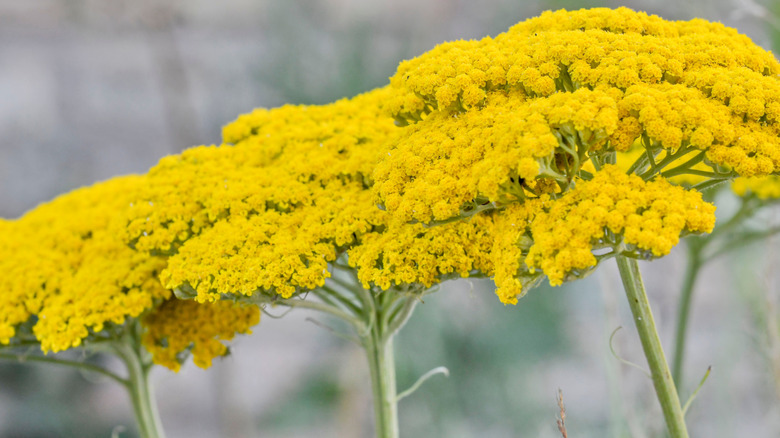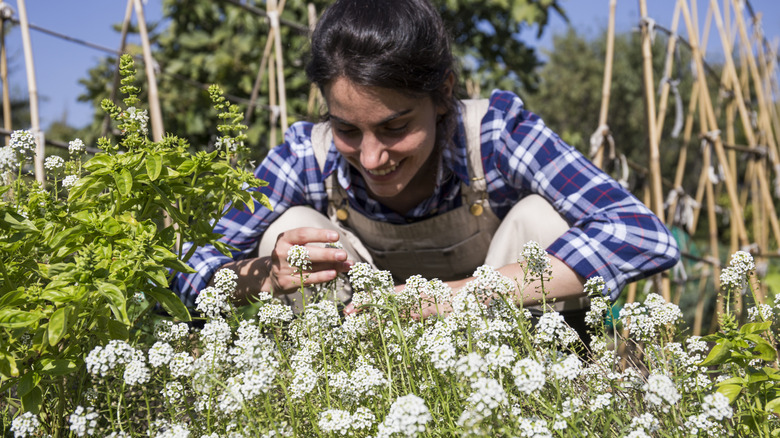Is Growing Yarrow Beneficial Or A Huge Mistake?
Yarrow (Achillea millefolium), a plucky plant that people all over the world have used for thousands of years for its medicinal benefits, tempts many gardeners to include it in their landscapes. But they're often concerned about its tendency to spread aggressively. Growing best in USDA Hardiness Zones 3 to 9, yarrow propagates through both self-seeding and rhizomes, and both can result in a rapid spread. Rhizome spreading in particular can result in a tangled mat of roots. Some gardeners also don't like yarrow to creep into their lawns because its fern-like leaves make it stick out and disturb the uniform look of the grass.
Yarrow offers so many positive ecological properties, however, that gardeners need not be overly concerned about its spreading habit. You can mitigate the issue if you learn how to divide and control yarrow. Yarrow has a few other downsides, though: Those with ragweed allergies may also be sensitive to it, as the plants are in the same family. It contains chemicals that make it mildly toxic to horses and cattle, but these animals tend to avoid it.
How yarrow benefits ecosystems
Yarrow offers benefits both in terms of how easy it is to grow and how it contributes to the whole garden. It comes in a variety of bright and pastel colors, including deep red, magenta, yellow, orange, lavender, peach, pink, purple, and white, offering myriad colorful choices to integrate into your landscape. Bonus: Yarrow remains in bloom for the full summer, June to August. Yarrow's feathery foliage also adds interest and elegance to the garden.
Convinced that this plant is worth a try? You'll likely find it isn't difficult to grow and take care of yarrow. It asks very little of the gardeners who tend it. The plant thrives in poor soil and is drought-resistant. It's easy to cultivate and grows quickly. It's deer- and rabbit-resistant. Yarrow can repel harmful insects (such as flies, beetles, and ants) while attracting beneficial bugs. Pollinators love it; a wide variety of bees and butterflies flock to its flat, accessible flower heads for nectar. When added to compost, it can accelerate decomposition.
If you're still concerned about spreading, consider planting your yarrow in a biodiverse setting with many different types of plants, which can limit rhizome formation. Another way to prevent unwanted spread is to grow your yarrow in containers; just be sure you're aware of mistakes to avoid when growing yarrow in containers, such as improper drainage or a lack of frost protection. You can also deadhead yarrow to limit spreading by seed. Gardeners interested in growing yarrow must decide for themselves if doing so would be a mistake, but if you're seeking a versatile, attractive plant that's easy to grow and beneficial to your garden, yarrow is a promising one to try.

